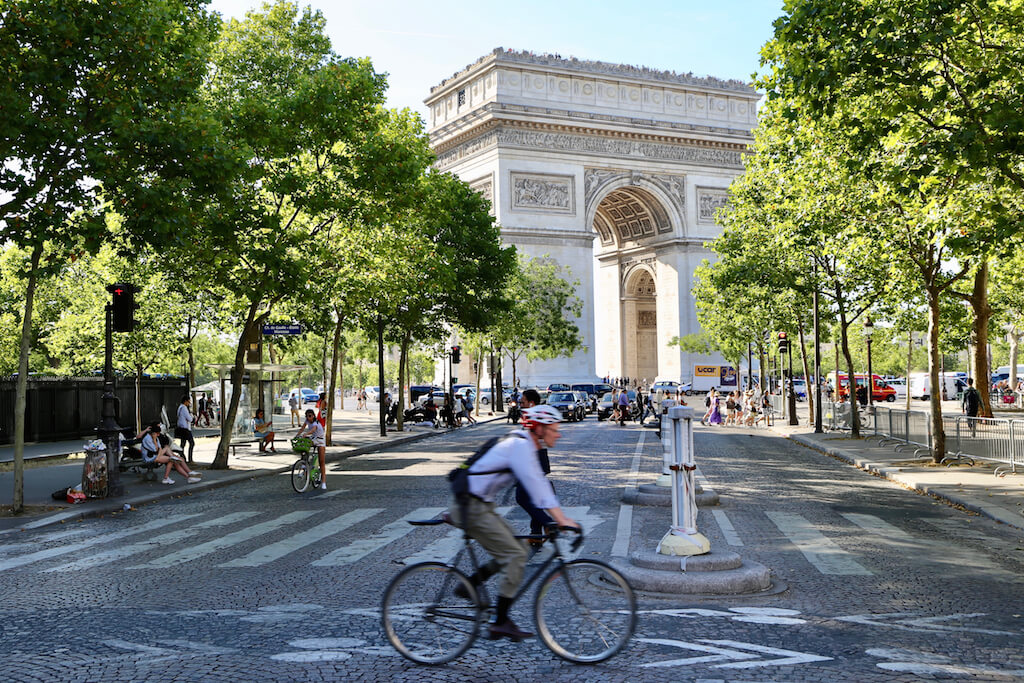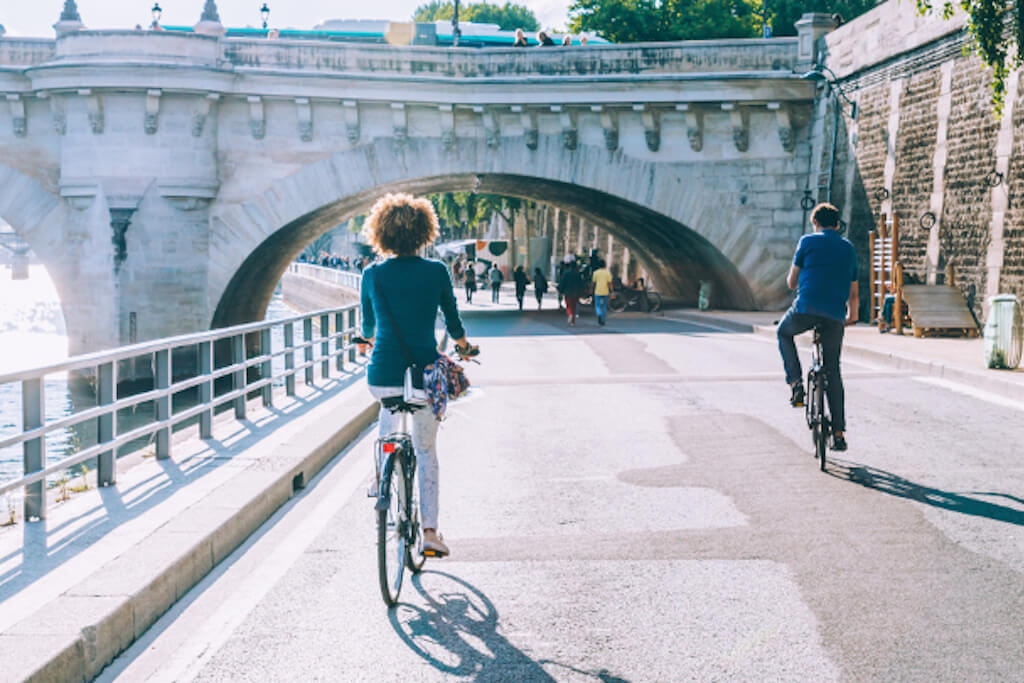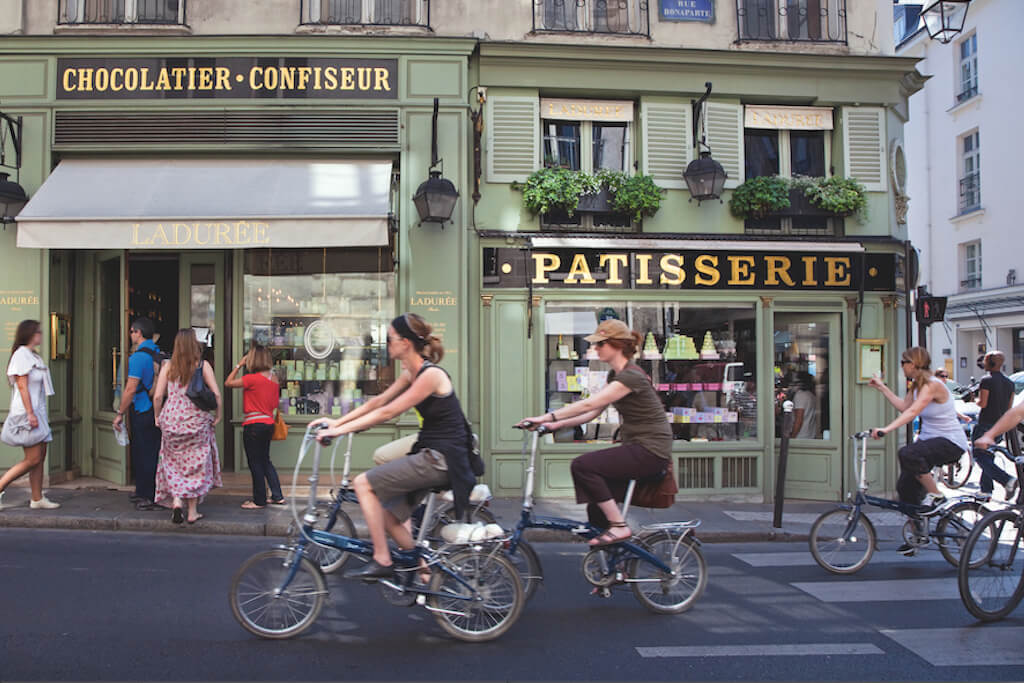Autumn Gear Guide
Find inspiration in our Gear Guide that will keep you out on your bike through wind or rain.
Download NowWith a massive investment in cycling infrastructure, the city of Paris, France is set to become one of the top bicycle-friendly cities on the planet. And we are so here for it. The French capital under Mayor Anne Hidalgo has already made significant improvements that continue to captivate the iconic town and combined with the […]

With a massive investment in cycling infrastructure, the city of Paris, France is set to become one of the top bicycle-friendly cities on the planet. And we are so here for it.
The French capital under Mayor Anne Hidalgo has already made significant improvements that continue to captivate the iconic town and combined with the pandemic have resulted in a massive local cycling boom. And now we know what Paris is planning for an encore.
From 2015-2020 the Paris cycling plan saw 150 million euros invested to double the number of cycling lanes and create a critical mass of infrastructure to spark a renewed interest in cycling as a primary means for residents and visitors to make their way around town. And it worked.
Now, for the next five years, the city aims to fill in the gaps and make Paris a “100 percent cycling city,” with more investment in infrastructure, the development of parking solutions, and, as the report states, the “strengthening of the cycling ecosystem.”
“This cycling plan is one of the essential pillars of ecological and social transformation that we are leading in Paris,” said David Belliard, Paris’ Deputy Mayor for Urban Transformation, on social media.
The investment in cycling has increased from 150 million to 250 million euros for the next five years. The plan aims to build upon the current level of 1,000 km of bike lanes, 300 km of cycle tracks, and 52km of provisional tracks as well as more than 30,000 parking stands with 1,000 spaces reserved for cargo bikes and 40,000 new secure cycle parking spaces. Other highlights include 2,400 electric charging stations on the road and 6,000 underground, as well as 10 fast-charging hubs.

Whereas the first plan was broad-based and inspirational, the second five years will see the city drill down to the neighborhood level to fill in the gaps to make the city completely cyclable by 2026.
Paris’s plan also presents a blueprint for other cities looking for a direction forward.
When the pandemic first hit, Paris did what a lot of cities were doing. They created new temporary lanes for cycling, new pedestrian areas, as everyone stayed close to home.
With city life slowly returning to a pre-pandemic normal, Paris is not taking the temporary lanes away and is instead making them permanent with granite separators instead of makeshift arrangements. This is in addition to Mayor Hidalgo pushing through bike lanes on hundreds of streets and countless other measures that put people’s quality of life first.
As some are suggesting, such as a recent article in The Guardian, there is a definite electoral trend favoring those who are supporting progressive bicycle policies.
Mayor Hidalgo was re-elected thanks, in part, to her strong cycling measures and has recently announced that she will be running to be the President of France. But she is not alone, similar election results favor bicycle-friendly candidates in cities such as London, Milan, and Barcelona.
But nowhere is any government moving faster and more thoroughly than in Paris where Mayor Hidalgo is systematically taking apart a city made for automobiles and recreating it for people and active transportation.

For instance, under the new plan, Paris will remove the vast majority of on-street parking spaces and turn them over to bicycles. It’s a move that would be unheard of in North America where every on-street automobile parking space is the subject of long and frustrating debates in all but a handful of cities.
Paris ends the discussion before it even begins.
How did they figure it out? According to the plan, 50 percent of public space is occupied by the car, despite it only accounting for 10 percent of trips in addition to the whole generating pollution leading to a climate emergency. So, Paris will take half of that space and repurpose it. Cycle paths will be part of that, but so will sidewalk development for pedestrians as well as park space.
Paris is already one of the top 10 bike-friendly cities according to the 2019 Copenhagenize index and is sure to move up the international ladder when the new plan is implemented.
Let’s hope this is the beginning of a massive movement as local governments begin to plan for post-pandemic life.
“The newly announced Paris 2021-2026 cycling plan represents a further leap forward and will make Paris even more attractive and liveable as a cycling city. Paris’ phenomenal cycling transformation is an inspiration for aspiring cycling cities everywhere,” says Jill Warren, CEO of the European Cyclists’ Federation. “A few examples of other places that have made great strides in cycling in recent years, backed by progressive governments, include Brussels, Barcelona, Milan, and Ireland — which in its coalition agreement in 2020 allocated 10 percent of its annual transport budget to cycling and a further 10 percent to walking, which adds up to €1 million per day in this relatively small country.”
Over the past two years, we have learned about the importance of public space, active transportation, and what a concerted effort looks like, something we will need to do again to battle the climate emergency. Making all temporary bike lanes and public spaces permanent is an easy win.
Find inspiration in our Gear Guide that will keep you out on your bike through wind or rain.
Download Now
I’ve been to Paris many times, and I love what Mayor Hidalgo is doing.
I’m one of the few Americans in my age group (I’m 76) who have never owned a car in their whole lives.
But, these developments aren’t without problems, and in Paris, as elsewhere, there _is_ a conflict between pedestrians and people who bike, as represented by those who do not respect others and pose a danger to others by not respecting the traffic rules.
Read this recent article in the NY Times about Paris.
https://www.nytimes.com/2021/10/02/world/europe/paris-bicyles-france.html/
I’ve heard that not everyone in Paris is thrilled with these changes (but I am!).
“The investment in cycling has increased from 150 to 250 euros for the next five years”. That should read “increased from 150 million to 250 million euros…”
Excellent article!
What do cyclists think?? And motorists???
Comments are closed.